When you hang a new bird feeder in your yard, you might expect immediate visitors. Instead, you’re met with silence and an untouched feeder. This common scenario leaves many backyard birding enthusiasts confused and disappointed. The truth is that birds approach new elements in their environment with caution, and this initial hesitation is actually a sophisticated survival strategy. Understanding why birds might avoid your new feeder initially can help you create a more welcoming environment and develop patience during this adjustment period. Let’s explore the fascinating reasons behind birds’ cautious approach to new feeders and discover practical solutions to help them feel comfortable visiting your backyard buffet.
The Instinctive Caution of Wild Birds
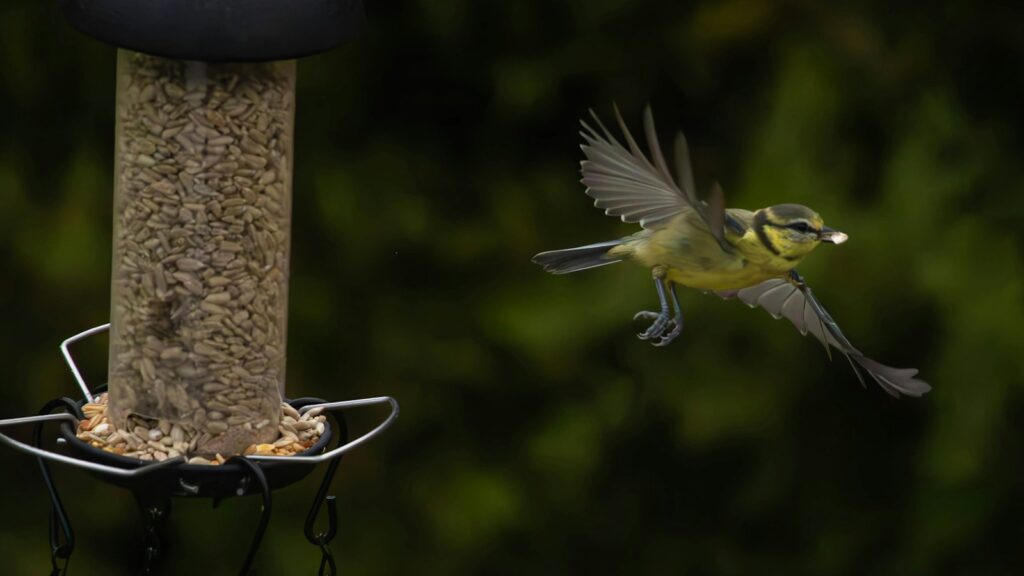
Wild birds possess a deeply ingrained wariness that has evolved over millions of years as a crucial survival mechanism. This natural caution toward anything new or unfamiliar in their environment—a phenomenon known as neophobia—has helped birds survive countless generations by preventing them from rushing into potentially dangerous situations. When a new feeder appears in your yard, birds don’t immediately recognize it as a food source but instead view it as a strange, unknown object that could potentially harbor predators or other threats. This evolutionary adaptation explains why even common backyard species like chickadees, cardinals, and finches might observe your new feeder from a distance for days before making their first approach. Their survival depends on this careful assessment, allowing them to outlive more impulsive individuals within their species.
Territorial Considerations Among Bird Species
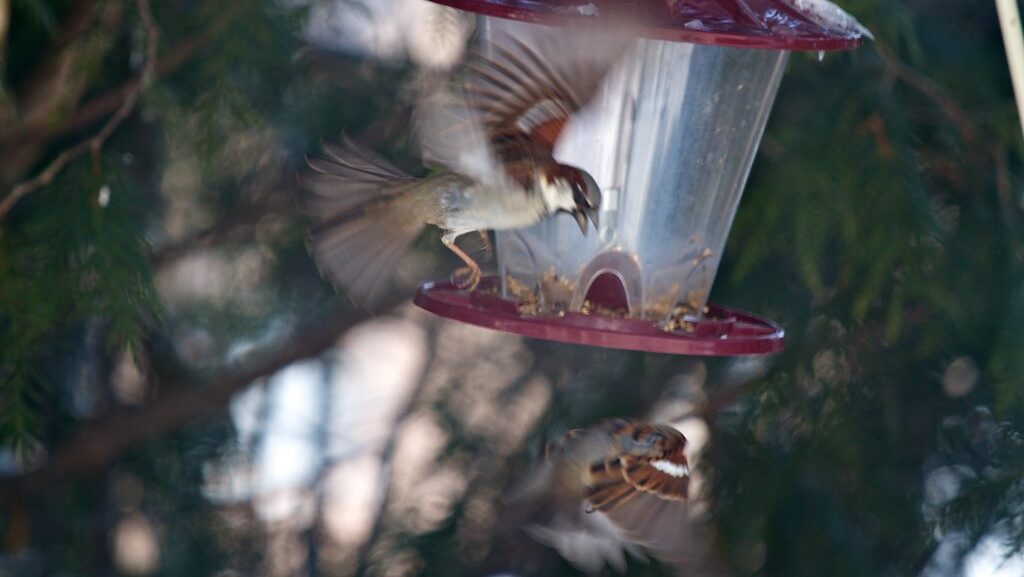
Birds establish complex territorial boundaries that influence their feeding patterns and movement throughout your neighborhood. Your yard exists within an established avian social structure where dominant birds may already control access to natural food sources in the area. Introducing a new feeder creates a potential disruption to this hierarchy, and birds need time to determine how this new resource fits into their existing territorial arrangements. Some species are particularly territorial around food sources—northern cardinals and blue jays, for example, may chase away smaller birds until they’ve established a new pecking order. The social reorganization that occurs when a new feeder is introduced takes time to stabilize, requiring birds to negotiate new boundaries and relationships before regular feeding patterns emerge. This social complexity is another factor contributing to the delayed adoption of your feeder.
The Unfamiliar Scent Factor
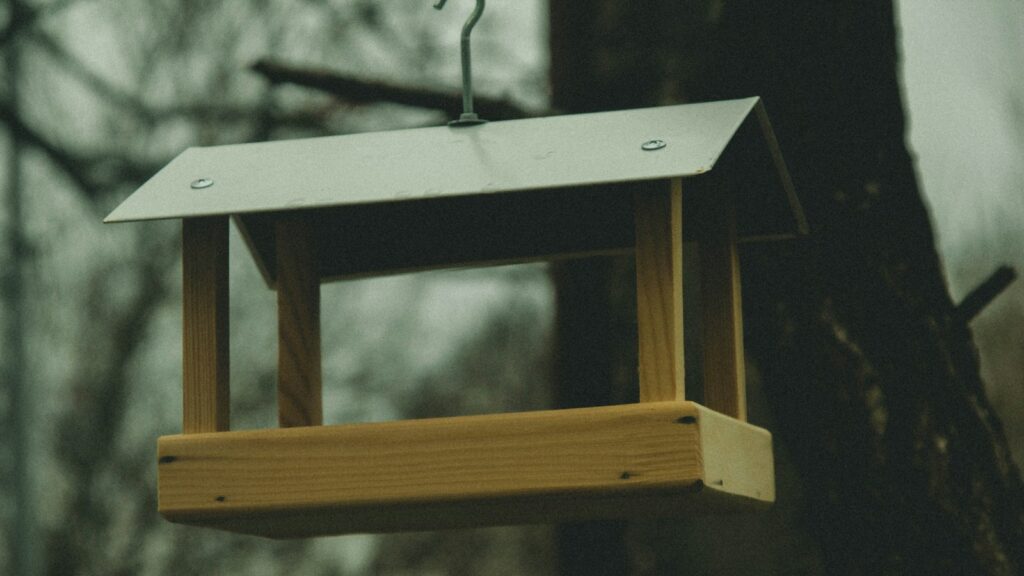
Though birds don’t have the most developed sense of smell compared to mammals, many species can detect certain odors, particularly those that might signal danger. New feeders often carry human scents, manufacturing chemicals, plastics, or metals that create an unfamiliar olfactory profile for cautious birds. These strange smells can serve as warning signals that trigger avoidance behaviors until weather exposure gradually neutralizes these unfamiliar scents. This sensitivity explains why feeders that have been handled extensively during setup or cleaned with strong-smelling chemicals might be particularly slow to attract visitors. Some experienced birders recommend allowing new feeders to “weather” naturally for a few days before expecting birds to approach, allowing rain and air exposure to diminish these potentially concerning scents.
Visual Novelty in the Landscape
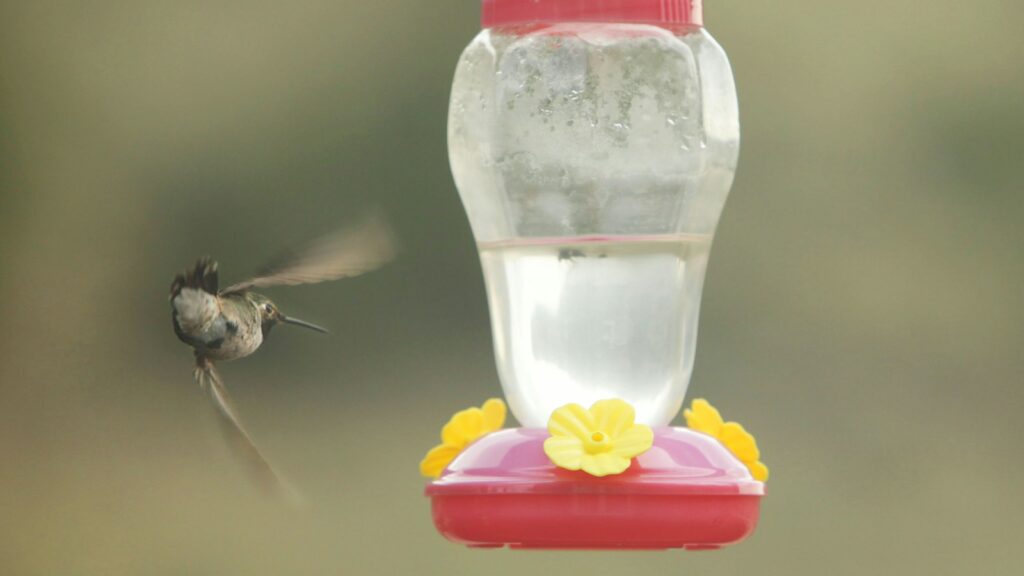
Birds have exceptional vision that allows them to detect subtle changes in their environment, making them highly sensitive to new objects in familiar spaces. A bright, shiny new feeder represents a significant visual disruption in the landscape that birds have mentally mapped as part of their daily routines. Colors that stand out sharply against natural backgrounds can be particularly slow to attract visitors, as birds may perceive these vivid hues as potential warning signals. This visual wariness is especially pronounced with metal or glass feeders that reflect light in unnatural ways, creating suspicious flashes that make birds hesitant to approach. Over time, as the feeder weathers and becomes integrated into the bird’s mental map of the area, this visual novelty factor diminishes, and birds begin to accept the new feature as part of their normal environment.
Food Recognition Challenges

Birds don’t automatically recognize everything that humans put in feeders as edible food sources. Different species have evolved to identify specific foods through appearance, texture, and placement in the environment. When you introduce a new type of seed or feeder style, birds may not immediately register it as a potential meal, especially if it’s different from what they typically forage for in nature. This recognition challenge is particularly evident when offering specialized foods like nyjer seed, suet cakes, or nectar solutions that may not resemble anything in the birds’ natural diet. The learning process requires birds to observe other individuals successfully feeding or to cautiously explore the new food source themselves before fully incorporating it into their regular feeding routine. First-time feeder hosts may need to wait longer, as there are no experienced birds in the area to demonstrate that the new feeder contains food.
Weather and Seasonal Timing Effects
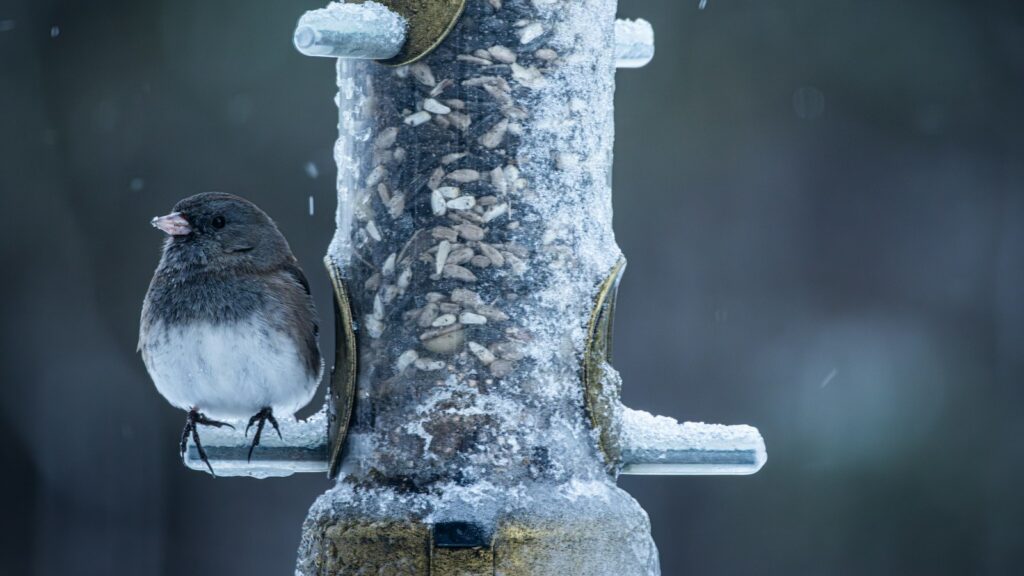
The timing of your feeder installation plays a crucial role in how quickly birds will discover and utilize it. During abundant natural food seasons like summer and early fall, wild food sources may be so plentiful that birds have little motivation to investigate artificial feeding stations. Conversely, harsh weather periods like winter or early spring when natural foods are scarce create stronger incentives for birds to overcome their natural caution and explore new potential food sources. Extreme weather conditions immediately following feeder installation can also delay discovery, as birds may reduce their activity and range during heavy rain, strong winds, or extreme temperatures. Understanding these seasonal patterns can help set realistic expectations about when your new feeder might become popular—winter and early spring installations often see faster adoption than summer setups in most North American regions.
Predator Presence and Perceived Safety
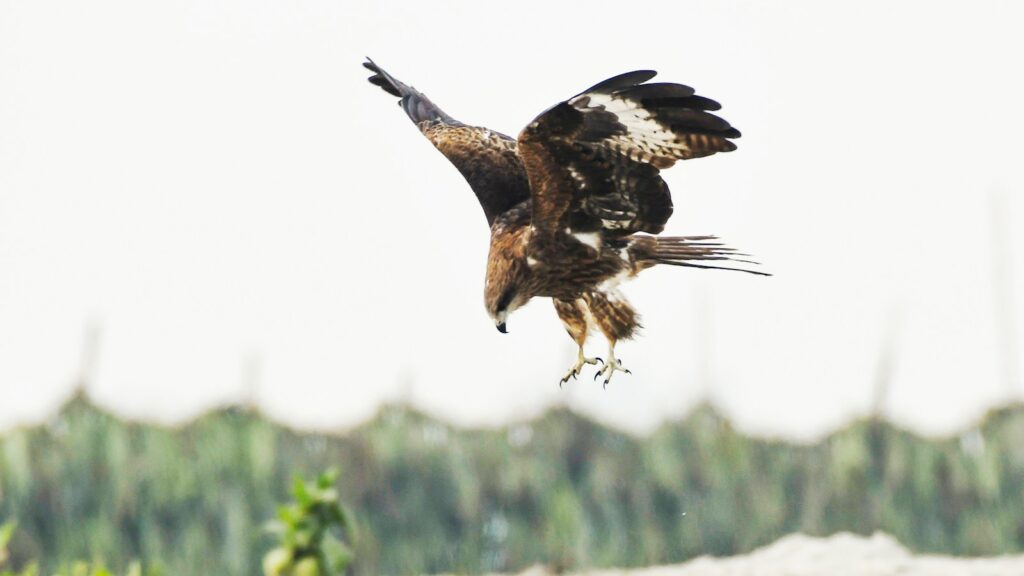
Birds constantly evaluate feeding locations for potential predation risks, making safety one of their primary considerations before approaching a new feeder. If neighborhood cats regularly patrol your yard or if hawks frequently hunt in the area, birds will be especially cautious about using a new feeder that doesn’t yet have a proven safety record. The positioning of your feeder in relation to protective cover plays a crucial role in this risk assessment—feeders placed too far from shrubs or trees that offer quick escape routes will be approached much more cautiously than those situated with safety in mind. The bird community also shares information about predation events, meaning that if one bird experiences a frightening encounter at your feeder, word may spread rapidly throughout the local population, significantly delaying acceptance of your feeding station. Creating a genuinely safe environment with appropriate escape routes and predator deterrents will accelerate feeder adoption considerably.
The Discovery Process Timeline
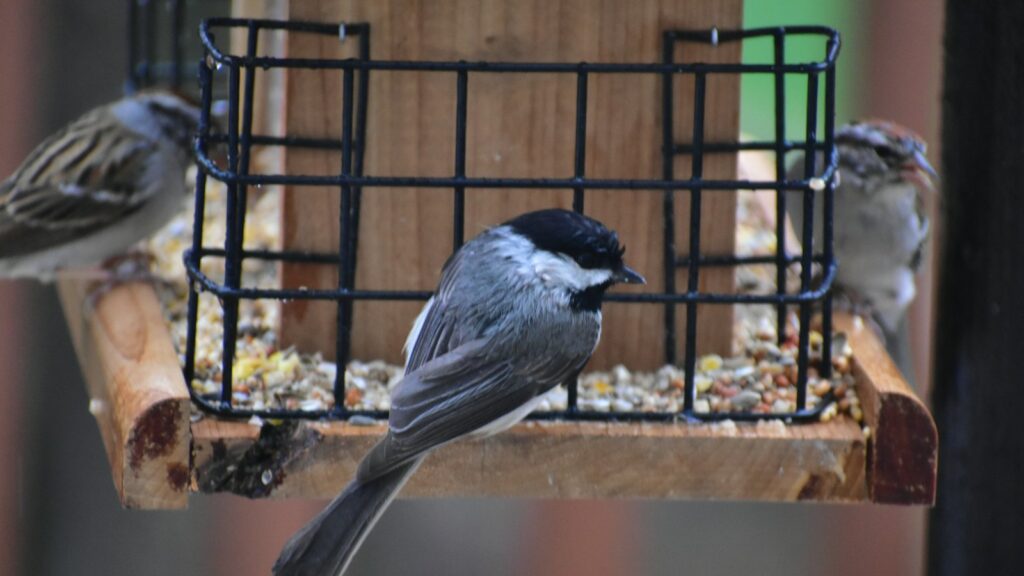
Bird discovery of new feeders typically follows a predictable pattern that unfolds over several phases before regular visitation becomes established. The initial phase involves cautious observation from a distance, with birds watching the feeder from nearby trees or shrubs for signs of danger, sometimes for days before the first brave individual makes an approach. The second phase includes brief, tentative visits by the boldest species or individuals—often chickadees or titmice in North America—who quickly grab a single seed before retreating to safety. The third phase sees longer feeding sessions and more species joining as social proof accumulates that the feeder is safe. Complete acceptance typically takes between two weeks and two months, depending on all the factors previously discussed, though in some challenging circumstances, it may take an entire season before a new feeder becomes fully incorporated into local birds’ regular routine.
Feeder Design and Bird Preferences

Not all bird feeders are created equal in the eyes of your potential avian visitors, and some designs naturally present higher barriers to initial acceptance. Enclosed tube feeders with small perches and tiny seed ports may be more intimidating to first-time visitors than open platform feeders that allow birds to maintain vigilance while feeding. Moving parts like weight-activated perches on squirrel-proof models can startle birds and extend the adjustment period significantly. Different species also show marked preferences for specific feeding styles—ground-feeding species like doves and towhees may avoid hanging feeders entirely, while finches strongly prefer tube-style feeders for small seeds. Understanding these design considerations can help you select a feeder style that minimizes barriers to acceptance for your region’s common species, potentially accelerating the discovery and adoption process.
Competition from Established Feeding Stations

If your neighborhood already has established bird feeding stations, you face the additional challenge of competing with these known food sources for birds’ attention. Birds develop regular feeding circuits, visiting reliable food sources in a somewhat predictable pattern throughout their territory. Breaking into this established routine requires your feeder to offer something compelling enough to warrant exploration and deviation from their proven food sources. This competition factor is especially significant in suburban areas where multiple households maintain feeders, creating a situation where birds have little incentive to risk investigating an unfamiliar feeding station. Offering premium foods not available at neighboring feeders—such as hulled sunflower seeds, high-quality suet, or fresh nyjer seed—can help overcome this barrier by giving birds a compelling reason to add your station to their feeding circuit despite the initial investment of caution required.
Effective Strategies to Accelerate Acceptance

Several proven techniques can significantly reduce the waiting period before birds begin visiting your new feeder regularly. Creating a ground scatter of seeds directly beneath your hanging feeder provides an easier entry point for many species and increases visibility of the food from above. Temporarily placing your feeder closer to protective cover before gradually moving it to your preferred location can help birds build confidence approaching the new food source. Visual and auditory attractants like moving water features or recorded bird calls can draw attention to your yard, though these should be used sparingly and ethically. Adding bird-friendly native plants nearby creates a natural environment that feels safer than an isolated feeder in an open space. Perhaps most importantly, maintaining absolute consistency in keeping the feeder filled prevents birds from wasting energy on visits to an empty food source, which can reset the entire acceptance process if it happens too frequently during the critical early adoption phase.
Seed Quality and Freshness Considerations
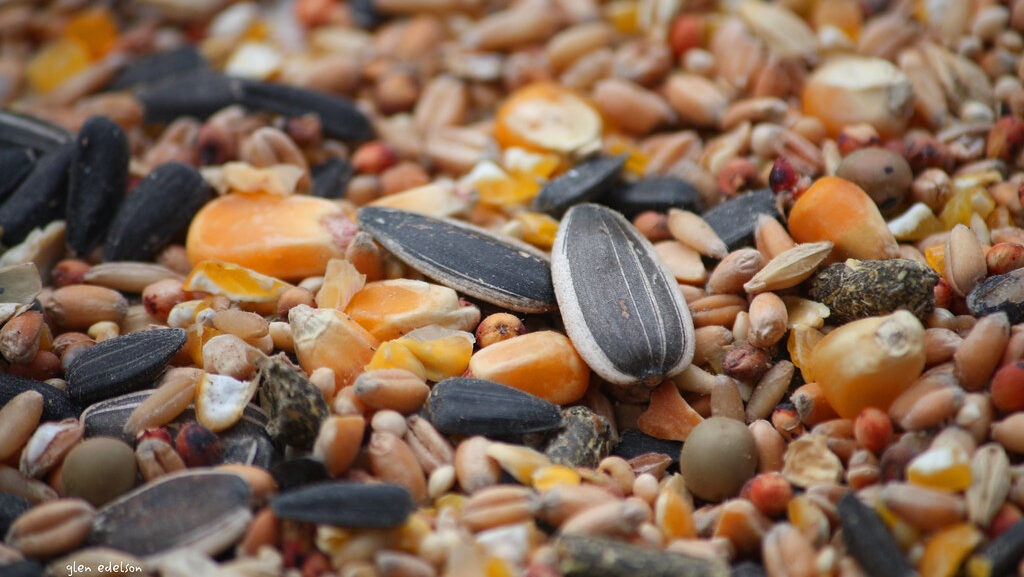
The quality of seed you offer in your new feeder significantly influences how quickly birds will overcome their initial hesitation. Stale, moldy, or low-quality seed blends containing fillers like milo, millet, or cracked corn may actually deter desirable songbirds who quickly learn to avoid these less nutritious options. Fresh, high-quality black oil sunflower seed, sunflower hearts, or nyjer seed will attract birds more quickly because they offer superior taste and nutritional value worth the risk of approaching a new feeder. Birds can detect rancid oils in old seed and will avoid feeders containing spoiled food, potentially blacklisting your feeding station for extended periods. Purchasing seed in quantities you can use within a month and storing it in cool, dry conditions preserves the natural oils and aromas that make it appealing to birds, helping overcome their initial reluctance to try your new feeding station.
Patience: The Ultimate Requirement
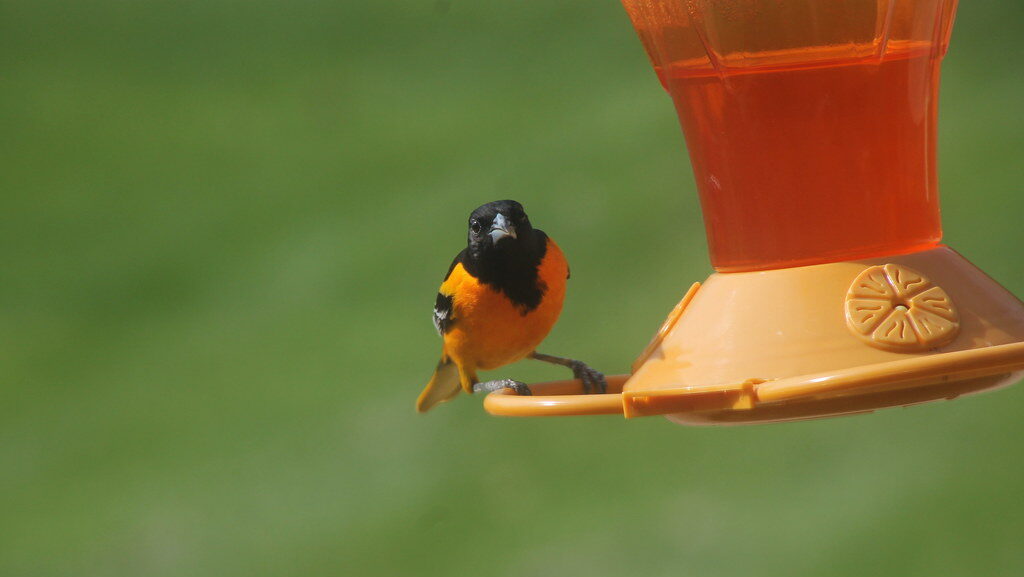
Perhaps the most important factor in successfully establishing a new bird feeder is the human capacity for patience during the sometimes lengthy acceptance period. Understanding that the absence of birds is not a reflection on your setup but rather a natural part of wild birds’ cautious approach to novelty can help prevent premature abandonment of your feeding project. Experienced birders know that consistent maintenance without frequent changes or disturbances during the critical establishment phase gives birds the stable environment they need to gradually overcome their wariness. Documenting the process through notes or photographs can help you appreciate the subtle progress as birds move through the discovery phases—from distant observation to brief visits to regular feeding. This patience ultimately rewards you with not just regular feathered visitors but also a deeper understanding of avian behavior and the complex relationship between birds and their environment.
Conclusion
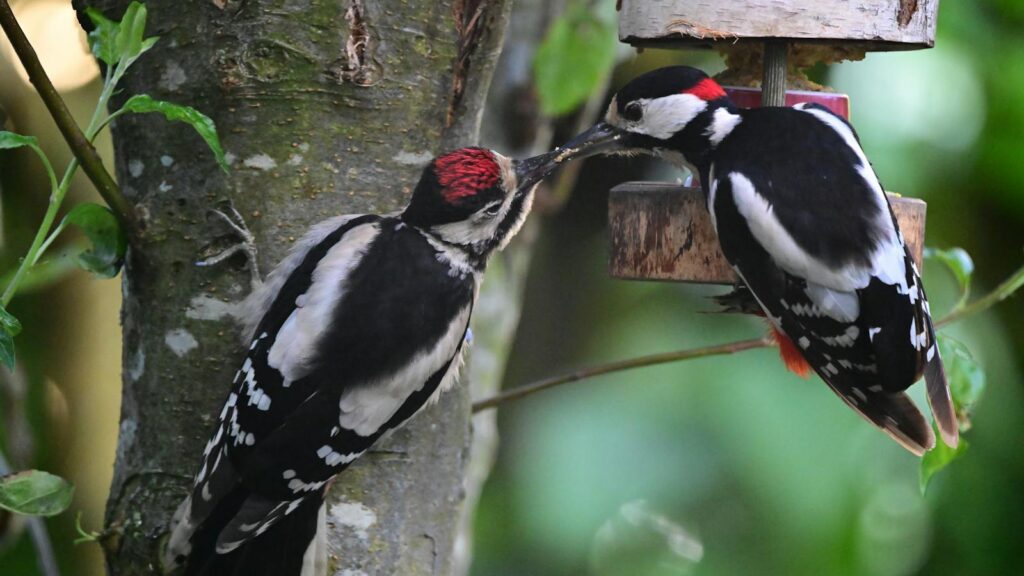
The seemingly simple act of birds approaching a new feeder actually involves complex behavioral, evolutionary, and ecological factors. Their initial hesitation represents sophisticated survival strategies that have enabled birds to thrive across millennia. By understanding these natural behaviors, you can create more bird-friendly environments and set realistic expectations for your backyard birding experience. Remember that patience is key—most new feeders will eventually attract regular visitors if maintained consistently in a safe location with quality food. The waiting period offers a valuable opportunity to observe the fascinating process of wildlife adapting to changes in their environment. When birds finally do become regular visitors to your feeder, that first chickadee or cardinal will be all the more special for the understanding you’ve gained about their cautious but curious nature.
